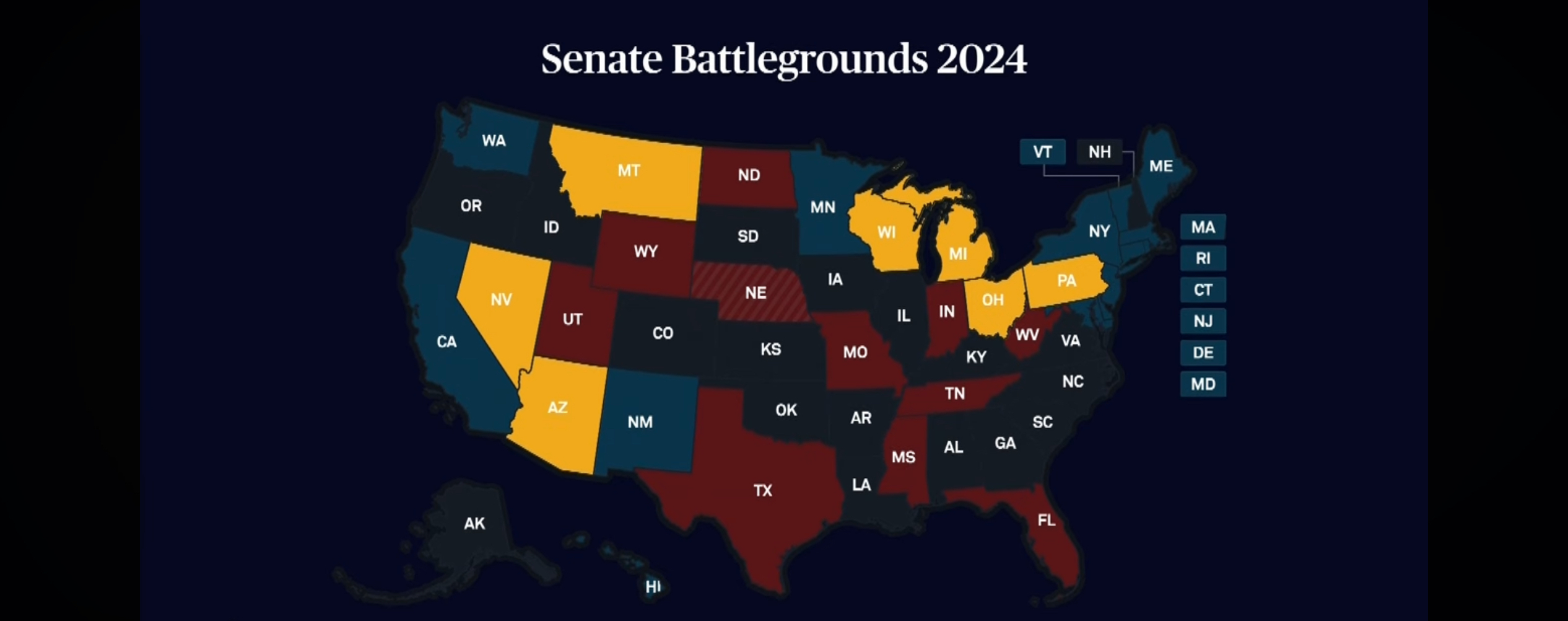In just two weeks, the U.S. elections will be held, with former President Donald Trump and Vice President Kamala Harris running for the presidency. Current national polls indicate that the two candidates are in a tight race, with several key “swing states” poised to determine the final outcome. Among them, Pennsylvania is widely regarded by pundits and analysts as the state most likely to decide who becomes the next president in this contentious election cycle.
In addition, the results of the Electoral College will play a crucial role; the candidate who secures an absolute majority of the 538 electoral votes-at least 270-will become president. However, given the prevailing uncertainty in the polls, it is possible that neither candidate will reach the majority threshold of 270 electoral votes, potentially leading to a 269 to 269 tie.
Regardless of the outcome, if no candidate gets a majority, the Constitution allows Congress to choose national leaders through a “contingent election.” In this scenario, the U.S. House of Representatives would elect the president not based on the overall House vote, but based on the preferences of each state delegation. This means that a candidate must garner the support of a majority, specifically 26 out of 50 state delegations, to win. Meanwhile, the vice president would be chosen by the 100-seat U.S. Senate, where a simple majority of 51 votes is required for election.
As stated before, this scenario it’s possible, but unlikely to happen; in fact, according to 538’s presidential forecast, there is only a 1-in-300 chance that neither Vice President Kamala Harris nor former President Donald Trump will achieve 270 electoral votes. The only plausible scenarios for this outcome involve a 269-269 tie, which would require significant shifts in key swing states that currently appear unlikely based on the present dynamics of the race.
Among the few scenarios depicted in the 538’s presidential forecast in which Harris and Trump end up in a tie, four scenarios stand out as the most likely, representing about 80 percent of these rare cases. In each of these scenarios, Harris wins states and congressional districts by a total of 225 electoral votes, while Trump gets 219. That leaves the 94 electoral votes from the seven key states-Arizona, Georgia, Michigan, Nevada, North Carolina, Pennsylvania and Wisconsin-and Nebraska’s second district as potential deciding factors for a tie.

Three of the four scenarios in which Harris and Trump could tie involve at least two of the northern swing states leaning toward the GOP, while the southern and western states remain mostly Democratic.
Of these scenarios, Scenario 1 is the most likely, with a probability of about 1 in 1,000. In this scenario, Trump holds North Carolina and wins Pennsylvania and Michigan, while Harris succeeds in taking Wisconsin, Arizona, Georgia and Nevada from President Biden’s 2020 results. The second most likely scenario is Scenario 2, with a probability of about 1 in 1,200, which has similar outcomes, except that Harris and Trump trade Georgia for North Carolina’s electoral votes. Scenario 3 has a probability of about 1 in 1,600; in this case, Trump regains the Sun Belt states and Nebraska’s second district, while Harris keeps the three northern battlegrounds. Finally, scenario 4 is the least likely, with an estimated probability of 1 in 2,000. This scenario would see Trump win all the northern battlegrounds and Nevada, while Harris wins the three southern swing states.
Currently, 538 predictions assume that electoral votes will be assigned to the candidate who wins them based on election results, but this is not an absolute certainty. In 2020, for example, Republicans in several states who supported Biden attempted to submit fake Republican voters to Congress, backing Trump’s unfounded claims of electoral victory; In addition, about two-thirds of House Republicans voted against certifying the results in Arizona and Pennsylvania. Although these attempts to disrupt the 2020 election ultimately failed, similar tactics could reemerge in 2024.
Moreover, Electoral College voters have some discretion in casting their votes, allowing for the possibility of a “faithless voter” who might choose not to vote for the projected candidate. As an example, during the 2016 elections, five Democratic and two Republican voters chose to vote for other candidates instead of their party candidates. If the election were to depend on each voter, as in the case of a 269-269 tie or other extremely close result, it is unlikely that an unfaithful voter would cast a protest vote. Still, it remains a possibility that cannot be entirely excluded.












